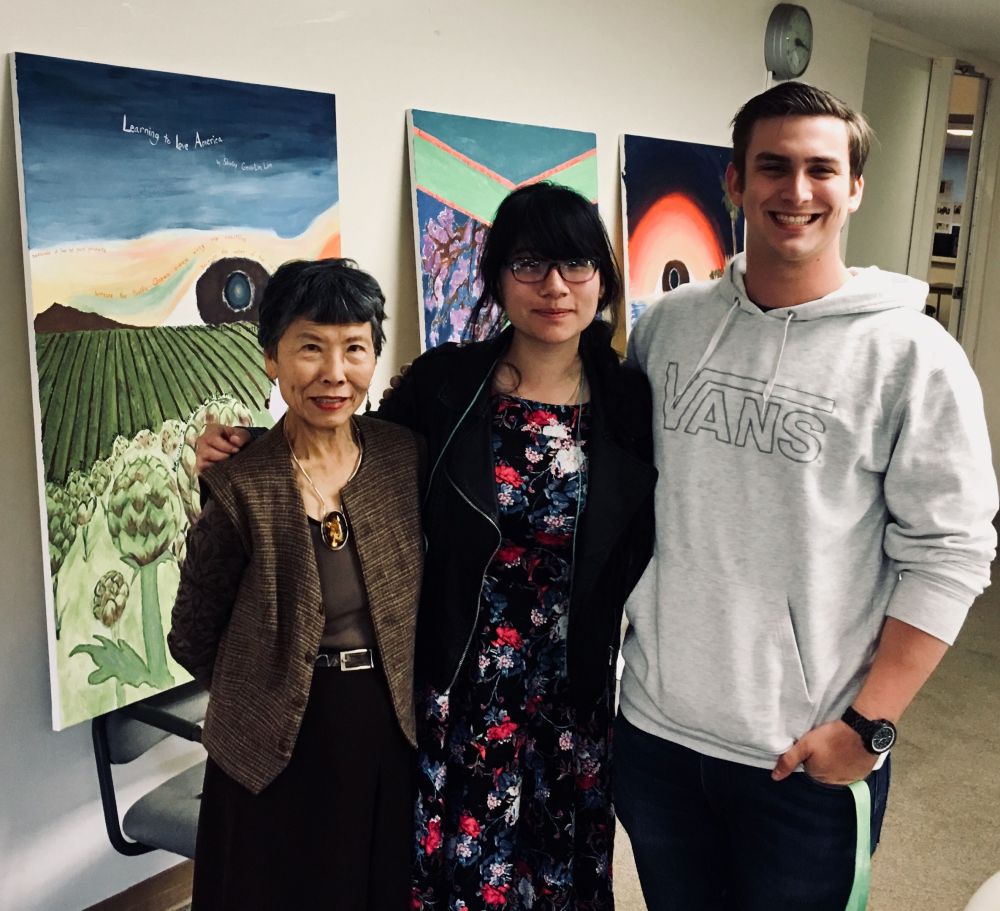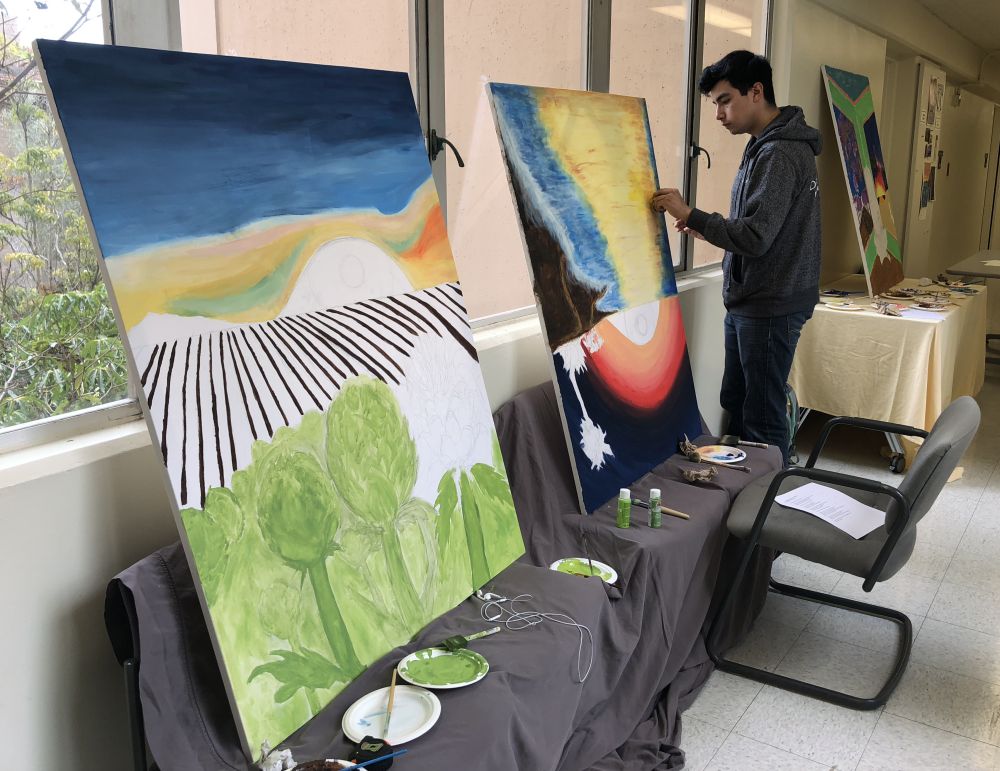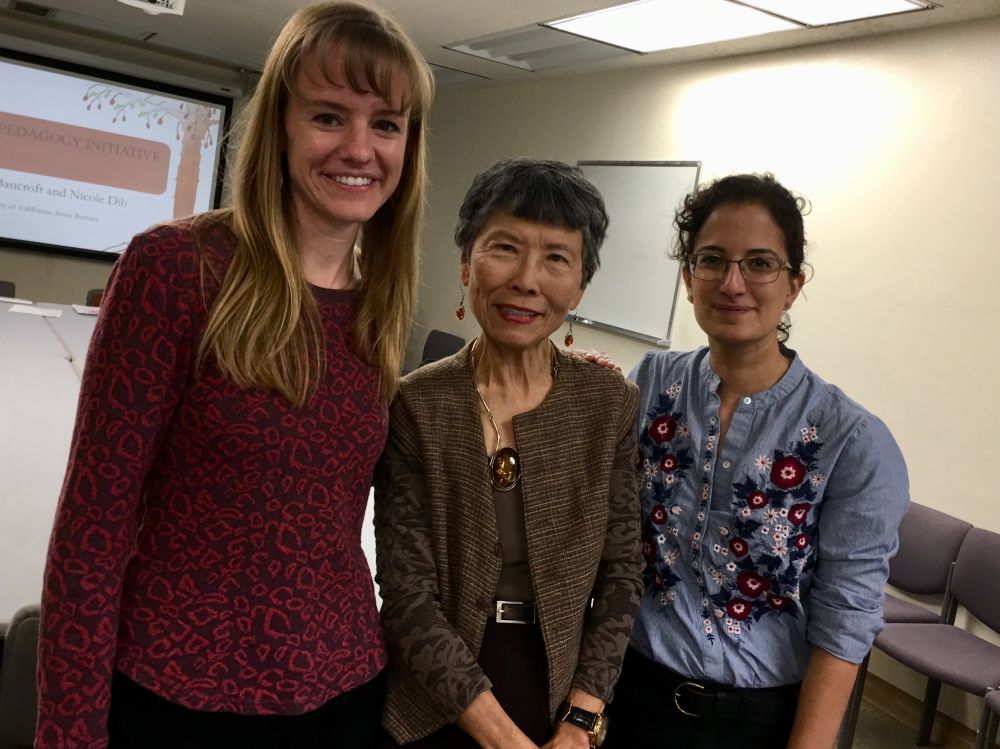The Illustrated Poet
When Shirley Geok-lin Lim wrote “Learning to Love America” in the mid-1990s, the poem was her way of expressing her commitment to embracing this country as an immigrant. Soon, as she is wont to do, she forgot about it.
And then, in its first episode in the grim days following the terrorist attacks of Sept. 11, 2001, Bill Moyers’ PBS show, “Now,” aired a segment in which Lim recited the 21-line poem on a bluff with the ocean behind her. It struck a nerve. Before long people were making videos of themselves reciting the poem, the band U2 projected it at concerts and it was included in the national Poetry Out Loud competition.
“Learning to Love America” had become a national phenomenon, and the professor emerita of English at UC Santa Barbara had no idea. Now she’ll be reminded of the poem’s enduring power whenever she’s on campus. A group of undergraduate and graduate students have painted three works that honor the poem that first appeared in “What the Fortune Teller Didn’t Say” (West End Press, 1998). Painted on three panels, they will hang in the campus’s South Hall on permanent exhibit.
“Shirley Lim is a poet of international stature who has long been one of the most beloved and popular teachers in the UCSB English department,” said Enda Duffy, professor and chair of the department. “Her poem ‘Learning to Love America’ has become a classic, taught in schools across the country. It is a brilliant example of how poetry matters — never more so than today.”
Created in the depths of winter, the paintings use imagery from the poem — artichokes, the ocean, jacaranda trees — and weave its words through colorful landscapes. Among the participating students were Nicole Dib, Corinne Bancroft, Rebecca Chenoweth and Sage Gerson, all English department graduate students; and undergraduates Victoria Nguyen, Connor James, Nathan Campos and Jayline Pascacio.
The panels make no attempt to explain the poem, which has been the subject of speculation and wild guesses on internet forums for years. It’s often seen as a simplistic celebration of the U.S. and the good fortune of becoming an American.
Lim, who was born in Malaysia to Chinese parents, says the poem isn’t quite so nationalistic. Rather, it was written as an act of resolve, a commitment to being a part of the country. “It’s almost as if to be American as an immigrant, you have to make a decision to love America,” she explained. “You’re not here for the goodies. Goodies can be found all over the world.”
More to the point, she said, it’s “because to have a son is to have a country” — the 17th line in the poem. Lim had married a white American in the 1970s, and soon she had a son and a home.
It’s difficult, she said, for Americans to understand an immigrant’s measured embrace of this country. “Most people think that the moment you cross the border to America you become an American. I don’t think it’s true.”
Lim explained that for immigrants like her who are viewed as the “other,” becoming American does not automatically confer acceptance. That’s why she suspects the poem still strikes readers. “I think it’s that one line: “ ‘because I have seen his eyes redden when he is asked who he is’.”
She’s referring to her son. The implicit rejection of American identity based on skin tone is a deeply hurtful fact of life in the United States, she said.
“That is perhaps the line that resonates the most,” Lim said. “The belief that children of immigrants are not raised to love America, or their children do not demonstrate that they love America.
“This is a difficult country in many ways,” she continued, “very challenging for an immigrant, especially a non-white immigrant. It’s like a challenging marriage.”
“Learning to Love America” is posted on UCSB’s celebration of National Poetry Month here.






